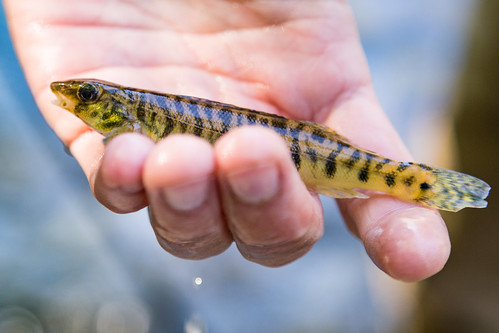Chesapeake Logperch Targeted for Restoration
Federal Funds Awarded to Multistate Recovery Effort

Photo Courtesy U.S. Fish and Wildlife Service
The Maryland Department of Natural Resources is part of a team of conservation agencies that was awarded a federal competitive State Wildlife Grant over the next two years to work toward the recovery of Chesapeake logperch in the Susquehanna River basin.
The Chesapeake logperch, a relative of darters and yellow perch, is currently only found in the Susquehanna River basin. In the past 80 years, its global range has diminished by more than 50 percent as the species has disappeared from the Potomac River basin and parts of the Susquehanna River basin. To survive, the logperch needs streams with silt-free gravel, as it feeds on aquatic invertebrates by flipping stones with its nose.
Staff will work with the Pennsylvania Fish and Boat Commission, Pennsylvania State University, Susquehanna River Basin Commission and Conservation Fisheries Inc. on a series of tasks to identify and implement conservation measures to assure the species’ long term viability in the Susquehanna River basin.
“This effort is a great example of teamwork among department experts in fisheries, stream health assessment and wildlife, and our partners working to protect Chesapeake Bay, our rivers and wildlife,” Maryland Natural Resources Secretary Mark Belton said. “I commend the work of this team and thank our federal partners for their recognition and resources.”
The Chesapeake logperch was specifically targeted for funding because the U.S. Fish and Wildlife Service identified it as one of a few species in the region where implementing conservation measures could potentially preclude it from listing under the federal Endangered Species Act. The department will receive nearly $40,000 over two years for this project.
State Wildlife Grant funds, administered by the Wildlife and Sport Fish Restoration Program, provide a unique source of funding, helping states to proactively focus on species identified in their Wildlife Action Plans, and helping to identify and reverse species population declines before restoration becomes more difficult and costly.

 1-888-373-7888
1-888-373-7888 233733
233733